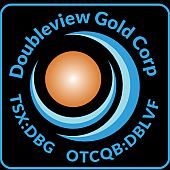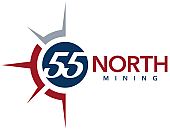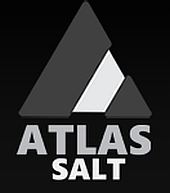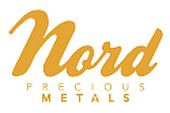 Appia Rare re-evaluates Elliot Lake uranium deposits
Appia Rare re-evaluates Elliot Lake uranium deposits
2023-11-16 10:27 ET – News Release
Mr. Tom Drivas reports
APPIA RE-EVALUATES POTENTIAL OF ITS ELLIOT LAKE URANIUM DEPOSITS IN VIEW OF INCREASED URANIUM PRICES, CONFIRMATION OF SIGNIFICANT RARE EARTH MINERALIZATION AND BULK MINING POTENTIAL
Appia Rare Earths & Uranium Corp. is revisiting its large uranium-rare-earth deposits located at Elliot Lake, Ont., to examine the impact of increased uranium prices and confirmation of significant rare element mineralization. The company will also evaluate the cost-saving potential of bulk mining the Teasdale Lake and Banana Lake zones.
In 2007, 2008 and 2012, Appia completed drill programs to confirm mineralization detailed in historical resource estimates for the Teasdale Lake and Banana Lake zones. Following the drill program, Appia engaged consulting firm Watts, Griffis and McOuat Ltd. (WGM) to provide an updated NI 43-101 resource estimate for the two zones.
The technical report was prepared in accordance with the provisions of National Instrument 43-101 and entitled “Update reports on the Appia Energy Corp. uranium-rare earth property, Elliot Lake district, north-central Ontario, Canada” by Watts, Griffis and McOuat, dated July 30, 2013, and filed on SEDAR+ on Aug. 14, 2013.
The NI 43-101 indicated mineral resource for the Teasdale Lake zone was 14,435,000 tons grading 0.554 pound U3O8 per ton and 3.30 pounds TREE/ton for a total of 7,995,000 pounds U3O8 and 47,689,000 pounds TREE. The inferred mineral resource was 42,447,000 tons grading 0.474 pound U3O8/ton and 3.14 pounds TREE/ton totalling 20,115,000 pounds U3O8 and 133,175,000 pounds.
The inferred mineral resource for the Banana Lake zone was 30,315,000 tons grading 0.912 pound U3O8/ton for a total of 27,638,000 pounds.
The historical resource for the five separate zones comprising Appia’s Elliot Lake property is summarized in a related table.
SUMMARY OF TEASDALE LAKE ZONE URANIUM AND RARE EARTH MINERAL
RESOURCE ESTIMATE ZONE
Tons TREE U3O8 Average Contained TREE Contained U3O8
('000) (lb/ton) (lb/ton) thickness (m) ('000 lb) ('000 lb)
Indicated
resources
UR 7,422 4.20 0.484 4.61 31,199 3,593
IQ 3,314 1.98 0.259 2.27 6.578 0.857
LR 3,699 2.68 0.958 2.60 9,912 3,544
Total 14,435 3.30 0.554 9.48 47,689 7,995
Inferred
resources
UR 20,201 3.87 0.421 4.33 78,080 8,498
IQ 11,254 1.64 0.184 2.78 18,464 2,070
LR 10,992 3.33 0.869 2.71 36,631 9,564
Total 42,447 3.14 0.474 9.82 133,175 20,115
Increasing uranium prices and strong rare earth interest
The spot market price for uranium has moved significantly higher in 2023 year to date and is up threefold from its bear market bottom in 2019. Favourable supply and demand fundamentals are expected to strongly influence uranium prices going forward. REEs have also attracted strong interest due to supply chain issues and concerns about China’s dominance of REEs processing.
“Appia’s uranium portfolio of both past producing and earlier-stage projects positions the company well to participate in the long-term uranium market appreciation,” stated Tom Drivas, chief executive officer. “The company holds a large ground position in Elliot Lake with a historical resource (non-compliant) totalling approximately 199 million pounds of uranium at a grade of 0.76 pounds U3O8/ton. Additionally, the company holds four high-potential early-stage uranium projects in the prolific Athabasca basin — Loranger, North Wollaston, Eastside and Otherside.”
“Many analysts are predicting higher uranium prices going forward due to a uranium deficit,” stated Stephen Burega, Appia’s president, “and the uranium market is currently in a production deficit that is expected to significantly increase with the buildout of nuclear reactors as the global demand for reliable clean base load energy increases. The increased interest in uranium and REEs, plus the cost-savings potential of bulk mining bode well for Appia’s Elliot Lake project.”
Drilling programs confirm REEs and outlines larger resource in Teasdale Lake deposit
The 2007 to 2008 and 2012 drill programs were also carried out to determine the REEs content in the various mineralized beds that comprised the Teasdale Lake deposit. Based on historical yttrium production and the presence of monazite, which is commonly enriched with REEs, it was recognized by Appia that the Elliot Lake uranium deposits could contain significant REE mineralization.
The drilling programs totalled 10,780 metres and indicated that additional drilling would continue to enlarge the zones.
The drilling confirmed the presence of three mineralized units, namely the Upper Reef, Intermediate Quartzite and the Lower Reef: The 3.2-metre thick Lower Reef horizon, which was mined extensively when the Elliot Lake camp was in production, contained significant REE mineralization and the highest uranium values. The Intermediate Quartzite averaged 2.65 m in thickness and was weakly mineralized with lower uranium and REE mineralization. The Upper Reef, measuring 3.95 m in thickness, contained the highest concentration of REE mineralization but lower uranium values compared to the Lower Reef.
The 2013, “Updated resource estimate report for the Teasdale zone” incorporated the significant REE mineralization in the Upper Reef and Intermediate Quartzite units as well as the higher-grade Lower Reef. The minimum vertical thickness was increased to 5.0 m to accommodate the use of larger underground equipment as a cost-reduction strategy. The inclusion of all three mineralized units as well as the expansion of the minimum vertical thickness increased the resource tonnage for the Teasdale zone to 14,435,000 indicated tons plus 42,447,000 inferred tons of uranium and REE mineralization versus 17,458,200 tons of uranium mineralization in the historical resource estimate. The total rare earth metal content was increased by approximately six times the uranium content.
The individual REEs included in the TREE mineral resource for the zone are listed in an associated table.
TEASDALE LAKE ZONE INDIVIDUAL REES INCLUDED IN TREE MINERAL RESOURCES
Zone
Light REE (ppm) Heavy REE (ppm)
La Ce Pr Nd Sm Eu Gd Tb Dy Ho Er Tm Yb Lu Hf Y
Indicated
resources
UR 540 951 93.9 313 51.7 1.9 32.8 3.9 17.2 2.7 7.0 0.9 5.5 0.8 6.8 72.9
IQ 256 452 44.9 148 24.4 1.0 14.7 1.8 7.7 1.2 3.1 0.4 2.5 0.4 3.6 30.6
LR 332 596 59.4 201 35.1 1.7 23.2 3.0 14.2 2.3 5.9 0.8 4.5 0.6 3.3 58.1
Total 422 745 73.8 247 41.1 1.7 26.2 3.2 14.3 2.3 5.8 0.8 4.6 0.7 5.2 59.4
Inferred
resources
UR 498 876 85.9 285 47.2 1.8 29.3 3.5 15.9 2.5 6.5 0.9 5.3 0.8 6.8 67.9
IQ 213 374 37.0 122 20.0 0.8 12.3 1.4 6.4 1.0 2.6 0.4 2.2 0.3 3.3 26.5
LR 417 747 73.9 249 43.4 1.9 28.5 3.6 16.4 2.6 6.6 0.9 5.2 0.7 4.5 66.4
Total 401 709 69.9 2332 39.0 1.6 24.6 3.0 13.5 2.1 5.5 0.7 4.4 0.6 5.3 56.5
Optimizing mining based on grade distribution, metal prices and mechanization
The significant rare earth mineralization in the Upper Reef provides several possible mining scenarios. The uranium-rich Lower Reef could be mined selectively to optimize revenue during periods of high uranium prices but lower REE prices. Alternatively, the REE enriched Upper Reef could be mined, followed by the removal of the Intermediate Quartzite to be used as backfill, and then mining the Lower Reef containing higher-grade uranium. A third alternative is to mine all three units simultaneously using larger mining equipment to increase production rates and lower mining costs. It is Appia’s intention to evaluate all three mining scenarios under varying metal prices for uranium and REE.
Qualified person
The technical content in this news release was reviewed and approved by Brian Robertson, PEng, director, and a qualified person as defined by National Instrument 43-101.
About Appia Rare Earths & Uranium Corp.
Appia is a publicly traded Canadian company in the rare earth element and uranium sectors. The company is currently focusing on delineating high-grade critical rare earth elements and gallium on the Alces Lake property, as well as exploring for high-grade uranium in the prolific Athabasca basin on its Otherside, Loranger, North Wollaston and Eastside properties. The company holds the surface rights to exploration for 113,837.15 hectares (281,297.72 acres) in Saskatchewan. The company also has a 100-per-cent interest in 12,545 hectares (31,000 acres), with rare earth element and uranium deposits over five mineralized zones in the Elliot Lake camp, Ontario. Lastly, the company holds the right to acquire up to a 70-per-cent interest in the PCH ionic adsorption clay project which is 17,551.07 hectares in size and located within the Goias state of Brazil.
Appia has 130.5 million common shares outstanding and 143.3 million shares fully diluted.
We seek Safe Harbor.



























